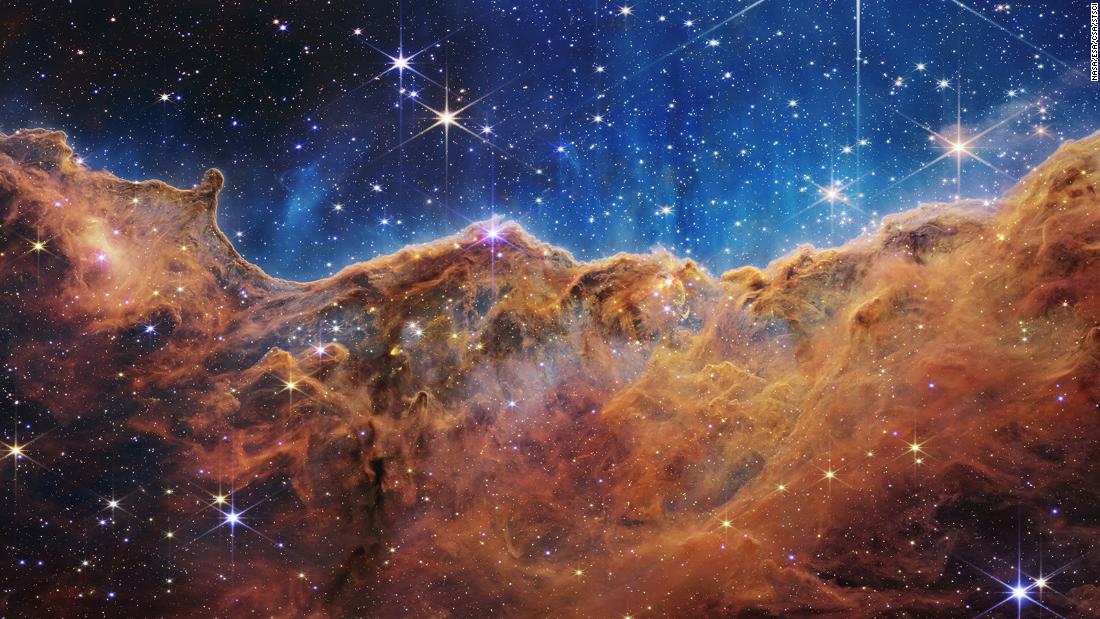
A group of angels listening for prayers is actually Stephan’s Quintet, a compact galaxy group discovered in 1877. The galaxies interlock in a dance 290 million light-years away from Earth.
Astronomers and space enthusiasts have waited for Webb’s debut for decades. When US President Joe Biden released the first high-resolution image on Monday, and NASA unveiled the rest a day later, it felt like the entire planet came together to marvel at them.
And the observatory’s scintillating journey is just beginning.
Across the universe
The Webb images show how the infrared observatory can peer through space’s dusty environment to uncover unseen aspects of the universe.
Previously invisible areas of star birth glow in Webb’s image of the Carina Nebula, which resembles a Van Gogh painting. Meanwhile, the dramatic death of a star plays out in the Southern Ring Nebula.
And clouds float within the hazy, hot atmosphere of a giant exoplanet more than 1,000 light-years away.
Other worlds
Ocean worlds may be the most promising place to look for life beyond Earth — and there are quite a few to choose from in our cosmic backyard.
Jupiter’s moon Europa and Saturn’s moons Titan and Enceladus may harbor oceans beneath their thick, icy surfaces. Planning is underway for multiple missions to visit these intriguing destinations over the next decades.
We are family
Sequencing of ancient DNA has solved the identity of human fossils found decades ago in a cave in China’s Yunnan province.
Now, genetic material from the skull cap has shown it belonged to a female member of Homo sapiens, rather than an archaic human species.
Furthermore, the analysis genetically linked the woman to the East Asian ancestry of Native Americans. It’s possible that this group traveled to Siberia and across the Bering Strait, becoming some of the first Americans.
Curiosities
Astronomers have detected a mysterious radio burst in space with a pattern similar to a heartbeat.
Typically, these bursts release a bright flash of radio waves that only lasts for a few milliseconds, and they have no known cause.
The new radio burst lasted for three seconds, about 1,000 times longer than normal, and it had “periodic peaks” every 0.2 seconds like a beating heart.
Ocean secrets
Blue whales, the largest animals on the planet, are the gentle giants of the deep and have no predators.
But these massive marine mammals are washing up on the Pacific coast of Patagonia at the southern tip of South America. Postmortems have shown that individuals died after having collided with a ship due to heavy ocean traffic from industrial salmon farming.
“People don’t realize how much of a global problem it is. These charismatic animals — everyone loves whales — they’ve actually become the ocean’s roadkill,” said Susannah Buchan, an oceanographer at the University of Concepción in Chile.
Discoveries
Dive into these worthy explorations for weekend reading:

